The competing House and Senate tax reform bills are large, complex, and often difficult to understand. The Senate bill, for example, is a 479-page document that was passed early in the morning last Saturday and that included last-minute, hand-written passages as shown to the right. 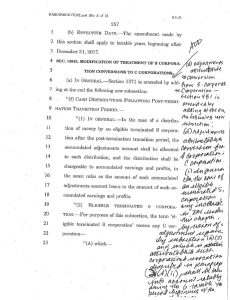 There are numerous parts of each bill that have a large impact on colleges and universities in the country, as well as their students. One estimate calculated after the House bill was passed is that if enacted into law, it would cost students and their families $71 billion over the next ten years. Now that both chambers have passed bills, a conference committee will try to hash out the differences and agree on one bill to be passed by both the House and Senate and sent on to President Trump to be signed into law. Continue reading “Tax reform that harms graduate students and university employees”
There are numerous parts of each bill that have a large impact on colleges and universities in the country, as well as their students. One estimate calculated after the House bill was passed is that if enacted into law, it would cost students and their families $71 billion over the next ten years. Now that both chambers have passed bills, a conference committee will try to hash out the differences and agree on one bill to be passed by both the House and Senate and sent on to President Trump to be signed into law. Continue reading “Tax reform that harms graduate students and university employees”
Author: Don Heller
Why holding an orientation for black students is the right thing to do
In the heavily-politicized and racially-charged environment in which our nation finds itself today, I suppose it is not surprising that some observers would seize upon a program like the University of San Francisco’s Black Student Orientation  and criticize it as promoting segregation, or providing a benefit from which other students are excluded.
and criticize it as promoting segregation, or providing a benefit from which other students are excluded.
Continue reading “Why holding an orientation for black students is the right thing to do”
Why DACA matters to USF and the nation
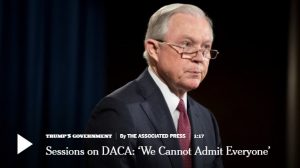
Earlier this week, under the direction of President Donald Trump, Attorney General Jeff Sessions announced the elimination of the Deferred Action for Childhood Arrivals, or DACA, program. Under his order the approximately 800,000 registered DACA individuals will see their legalized status in this country end in six months, subjecting them to deportation and other administrative actions. The president encouraged Congress to pass legislation that would provide a permanent legalization of the status of DACA registrants, but only if it did so as part of a comprehensive immigration reform plan – something Congress, whether controlled by Democrats or Republicans, has been unable to do for decades.
Why would a high school encourage its students to apply to 100 colleges?
The Chronicle of Higher Education recently published an article titled, “They each applied to more than 100 colleges. That may be the problem” (the article is behind the Chronicle’s paywall; here’s a link to it that will be available for a limited period of time). The article’s lede states:
Anisah Karim was by all measures a good student – she earned high grades, took part in her high school’s selective dual-enrollment program, launched her own culinary nonprofit, and participated in a slew of extracurriculars.
But when her college counselor told her to apply to 100 colleges so she could have a chance at becoming a “million-dollar scholar,” a coveted term her school uses to honor students who receive more than a million dollars in scholarship offers, Ms. Karim said she found herself getting pulled out of class and faced with disciplinary action during her senior year for not meeting application requirements.
Continue reading “Why would a high school encourage its students to apply to 100 colleges?”
President Trump’s first budget guts (sic) funding for higher education
President Donald Trump has submitted his first budget to Congress, an event many have been waiting for anxiously. 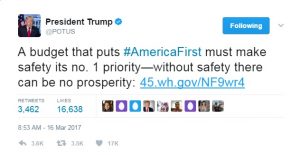 Candidate Trump, during the presidential campaign last fall, spoke frequently about reducing the size of the federal government and “draining the swamp” of Washington, so this budget was among his first emphatic statements in support of those pledges.
Candidate Trump, during the presidential campaign last fall, spoke frequently about reducing the size of the federal government and “draining the swamp” of Washington, so this budget was among his first emphatic statements in support of those pledges.
There is a lot to discuss about this FY18 budget, including the fact that virtually every Cabinet and other agency included in the budget – with the exception of Defense, Homeland Security, and Veterans Affairs – is seeing a decrease in funding from FY17 levels ranging from 1 percent (NASA) to 31 percent (EPA). There are my details still missing, however, as this is known as a “skinny budget,” typical of that submitted by first-term presidents who do not have much time to put the budget together. My particular and admittedly selfish interest is how this budget is likely to affect the nation’s roughly 4,600 degree-granting institutions of higher education. Here’s the spoiler, for those who don’t want to bother reading this entire post: The news is not good.
Continue reading “President Trump’s first budget guts (sic) funding for higher education”
Higher education turmoil in Washington
It’s been almost seven weeks since President Trump was inaugurated, and it’s been quite tumultuous for those of us in colleges and universities around the country. Regardless of one’s politics, I think that many of us were not sure what to expect with the new administration, largely because then-candidate Donald Trump said relatively little about higher education during the campaign.

I wrote about the little he had said about the topic, and wrote a similar piece about Hillary Clinton’s proposals, which were more fleshed out. I also had written about the President-elect’s nomination of Betsy DeVos to the post of Secretary of Education.
New York Governor Cuomo’s proposal for free college – still a bad idea
Earlier this week, New York Governor Andrew Cuomo joined other politicians who have proposed free college programs. As I have pointed out about similar proposals made by President Obama and former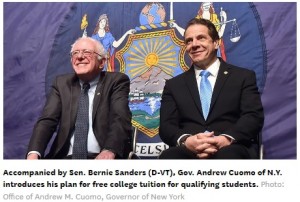 presidential candidate Hillary Clinton, there are numerous problems with these programs. In a commentary in The Hechinger Report, I outline why this is still bad public policy.
presidential candidate Hillary Clinton, there are numerous problems with these programs. In a commentary in The Hechinger Report, I outline why this is still bad public policy.
President-elect Trump’s choice for Secretary of Education: What will it mean for higher education?
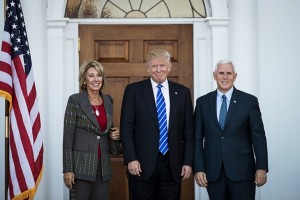
The Chronicle of Higher Education asked me to write a column about President-elect Trump’s nomination of Betsy DeVos as Secretary of Education, focusing on what impact she would have on higher education across the nation. DeVos, who has a long track record as a Republican activist and supporter of charter schools and school vouchers in Michigan, was a surprise choice to many. While she has paid much less of her attention to higher education, in the column I suggested a few areas on which she may focus as Secretary.
Bigoted actions across the nation and President-elect Trump
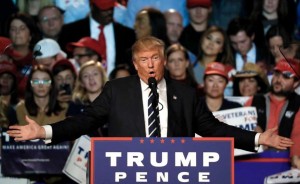
During the presidential campaign I wrote about the higher education proposals of Hillary Clinton and Donald Trump. Since the election last week there has been so much that has happened in our country that I almost wouldn’t know where to start to comment. However, one thing that has been very disturbing has been the outbreak of racist, nationalist, misogynist, anti-immigrant, and other bigoted actions across the nation. This morning’s San Francisco Chronicle has an op-ed I authored calling on President-elect Trump to take quick action to stop them.
On reading, or the legacy of Donald E. Westlake (part 2)
Part 1 of this post.
I did not read another Donald E. Westlake novel after I graduated from high school and left Madison, even though he published many more volumes before he died in 2008. I discovered other writers and topics that garnered my attention, both through my studies in college and graduate school as well as outside of those topics. But I have maintained my love of reading throughout the subsequent years.
When I finished my doctoral studies and had a few months free between graduation and when I started my first job as an assistant professor, I bought myself the present of a copy of the John Updike book, Rabbit Angstrom: A Tetralogy. The volume, published a couple of years earlier, was a compilation of Updike’s four Rabbit novels, each of which I had read in sequence over a period of about 20 years earlier in my life. For me, it was an indulgence to be able to sit and reread all four of these books, which were among my favorites of all time (ranking right up there with Westlake, of course), and which chronicled the life of Harry “Rabbit” Angstrom from high school through the end of his life.
Continue reading “On reading, or the legacy of Donald E. Westlake (part 2)”